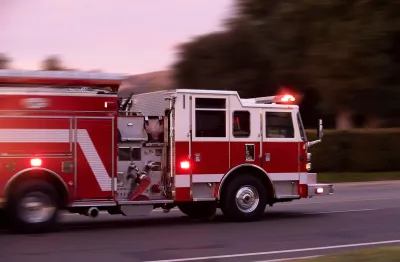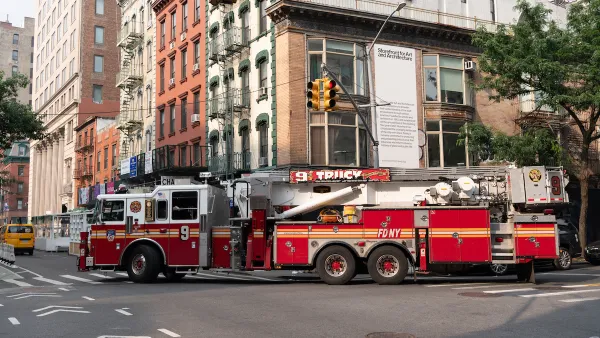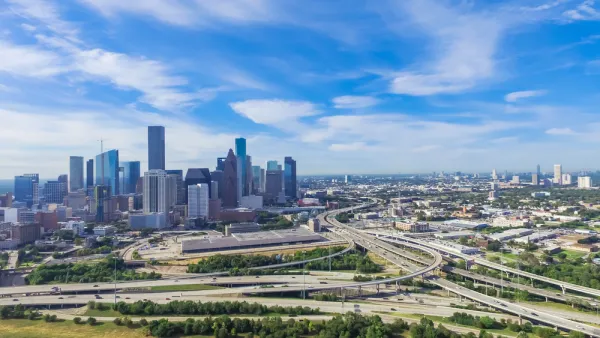Despite common concerns that narrower traffic lanes and bike infrastructure can slow emergency response, response times in one study didn’t change.

A study that sought to quantify the impact of road diets on emergency response times found that “there was virtually no difference in emergency response travel time (in min/km) after a road conversion compared to before, both in total and when they looked at specific road diets.”
As Jonathan M. Gitlin explains in Ars Technica, a research team from the University of Iowa surveyed first responders. Roughly half of the first responders surveyed believed there was no change in response time, while a third believed response times slowed down and 16 percent thought response times became faster.
The team then looked at specific response times from three fire districts in Cedar Rapids, Iowa where road diets were installed, finding no change in response times. The study is an important part of the debate over traffic calming tools such as lane width reduction, which has been shown to improve traffic safety — thus also reducing the need for emergency response to traffic crashes.
FULL STORY: Bike lanes and narrowed streets don’t slow emergency vehicles

National Parks Layoffs Will Cause Communities to Lose Billions
Thousands of essential park workers were laid off this week, just before the busy spring break season.

Retro-silient?: America’s First “Eco-burb,” The Woodlands Turns 50
A master-planned community north of Houston offers lessons on green infrastructure and resilient design, but falls short of its founder’s lofty affordability and walkability goals.

Delivering for America Plan Will Downgrade Mail Service in at Least 49.5 Percent of Zip Codes
Republican and Democrat lawmakers criticize the plan for its disproportionate negative impact on rural communities.

Test News Post 1
This is a summary

Test News Headline 46
Test for the image on the front page.

Balancing Bombs and Butterflies: How the National Guard Protects a Rare Species
The National Guard at Fort Indiantown Gap uses GIS technology and land management strategies to balance military training with conservation efforts, ensuring the survival of the rare eastern regal fritillary butterfly.
Urban Design for Planners 1: Software Tools
This six-course series explores essential urban design concepts using open source software and equips planners with the tools they need to participate fully in the urban design process.
Planning for Universal Design
Learn the tools for implementing Universal Design in planning regulations.
EMC Planning Group, Inc.
Planetizen
Planetizen
Mpact (formerly Rail~Volution)
Great Falls Development Authority, Inc.
HUDs Office of Policy Development and Research
NYU Wagner Graduate School of Public Service





























